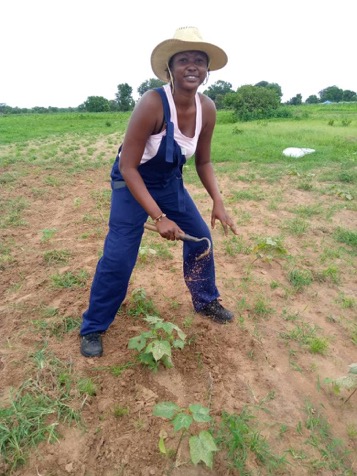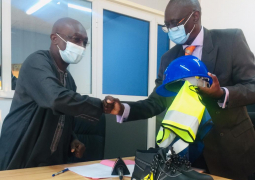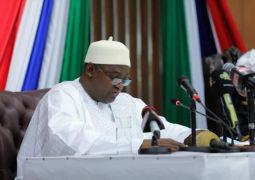
The exports data ranged between 197 tonnes in 2004, 530 tonnes in 2005 and 402 tonnes in 2006. Basically, the country’s years of vibrant cotton industry died in the 90s. And now, a young woman entrepreneur is poised to bring Gambia’s cotton back on world map as a source of top quality cotton.
Based in Giroba village outside Basse, Elsie was just a college going girl when she conceived the idea of venturing into cotton production by 2018. With an entrepreneurial mind to provide solutions to the country’s challenges, she opted for this industry upon research and realising the drop in production and a dying sector, she was convinced she could make a difference. First, she began consulting with the National Agricultural Research Institute (NARI) office in Brikama.
The Gambia from Entrepôt to Exporter and Eco-tourism (July 2007): a disgnostic trade integration study for the integrated framework for trade-related technical assistance to Least Developed Countries has blamed the country’s drop in cotton production to various factors. The study highlighted several factors contributing to the significant drop in cotton production, including high farm input requirements, necessitating a significant investment from the producer, both in terms of finance and time.
In 2019, when Elsie began her experiment with a one-hectare land assigned to her by Department of Agriculture at its Giroba camp, she emptied her savings account, a total of D30, 000 to begin her work. This money covered land clearings, ploughing and to some extent, sowing. She moved over to stay in a hut house, from a nice suburb of modern life of the cities, having no farming background, to begin a new life, over 400 kilometres away.
“I was even prouder of the fact that The Gambia had been producing a grade A cotton and exporting to the world market. This is the best grade in cotton production... Yet, the sector was dying. The more I researched, the more I find that I am suited for this,” she said in an interview at her farm.
“The inputs did not only stop at the preparation of the land for sowing; it also requires weeding, applying fertiliser, pesticides, and herbicides, which in my first experience, I found to be a bad practice, with environmental and personal hazards. It requires labour and skill-sets and I had to pay for a lot of it, with technical guidance received from agricultural experts in Giroba,” she narrated.
With seeds and other specialized inputs she sourced on loan from a farmer group, she began her venture in 2019, selling the 400 kilogram harvests for cash. The loaned inputs are deducted from the total purchase and she was given the balance of her money.
Lessons learned, and first among them was to never use conventional method of farming, requiring chemical applications. She now thought of organic farming and attempted to expand beyond the one-hectare area assigned for experiment. She sought help and through SheTrades, acquired a five-hectare land in order to go 100 per cent organic. She remained determined, and learned other valuable lessons in subsequent years.
Through the NARI director general, she would go on a study tour in Burkina Faso, a country that distinguishes itself in cotton production and processing in the sub region. The trip was funded by Gambia export agency, GIEPA. She learned first-hand what she did wrongly, how she could do better in the farming practices, and beyond the land, the option of exporting her produce directly without an intermediary. But first, she required a certification of her organic produce.
The seat of the cotton sub sector in The Gambia had been in the Upper River and parts of Central River regions, where over 3,000 farmers have been registered as producers, a vast land are of over 10, 000 hectares dedicated to cotton production. Among them is Musa Bandeh, who also served as a mentor for Elsie, having been a successful farmer himself and leading a farmer cooperative group there.
The only ginning factory in the country, GAMCOT, was located in Basse, the region’s administrative capital. In 1991/92, the government of The Gambia entrusted to the French cotton company, CFDT, the management of the cotton sub-sector for one year as part of the World Bank programme of privatization of state-owned industrial companies, leading to former regime’s Vision 2020 development plan.
According to this study, international market prices were strong at the time and the cotton sub sector was quickly privatized. A new private company, GAMCOT, created in 1992 with a 10,000 metric tonnes ginning plant capacity but the plant was operating far below its potential capacity, leading to huge losses.
Seed-cotton production has never reached 600 metric tonnes between 1999 and 2008.
The study, therefore, recommended an urgent need to critically assess the cotton sub sector and institute practical remedial measures to arrest the continuous decline in production and productivity.
Perhaps, the next generation of cotton farmers in The Gambia will be educated entrepreneurs like Elsie, whose focus will not just be on small scale production alone but large, commercial-scale production with an eye on value-addition, not just for annual rainy seasonal but an all year-round one for industrializing the sector.




